Lecture
Plan 1. History and general characteristics of body-oriented psychotherapy 2. Vege Therapy V. Reich 3. Bioenergy A. Lowen 4. Other methods of body-oriented therapy 1. Overview and history of the method Body-oriented psychotherapy (TOP) - the direction of psychotherapy, which unites a number of author's methods: vegetative therapy (V. Reich); bioenergetic psychoanalysis (A. Lowen); core (Core) energy (D.Pierrakos); somatic therapy - biosynthesis (D. Boadella); Radix (C. Kelly); Hakomi (R. Kurz); somatic process (S. Keleman); organism psychotherapy (M. Brown); primary therapy, or primary cry therapy (A. Yanov); complexes of physical exercises associated with the expression and improvement of the usual physical postures (F. Alexander), as well as the awareness and development of bodily energy (M. Feldenkrais); structural integration, or rolfing (I.Rolf); biodynamic psychology (G. Boysen); bodynamics, or psychologists of somatic development (L. Marcher); sensory awareness (Sh. Selver); psychotonic (F.Glaser); procedural therapy (A. Mindell). The scope of the TOP also includes a number of original domestic techniques, first of all, theatatherapy (V. Baskakov). Close to the TOP are a number of techniques, fragments of which can be used in working with clients: Rosen-method (M. Rosen); BEST (E.Zuev), insight-method (M.Belokurova), various types of motor and dance therapy, including analysis of movements (R.Laban) and acting techniques, bodily-respiratory and sound psychotechnics, as well as Oriental bodily practices. The historical roots of the TOP lie in the works of F. Mesmer, S. Ricke and J.-P. Sharko, I. Bernheim, V. Jems and P. Jané, alongside with which the theory of I. Sechenov about "muscular feeling" . This direction received wide recognition and systematized design thanks to the works of V. Reich, beginning in the late 30s. Reich believed that defensive behaviors, which he called the "characteristic shell", manifest themselves in muscular tension, which forms the protective "muscular shell" and cramped breathing. Therefore, Reich used various body contact procedures (massaging, controlled pressure, soft touch) and controlled breathing, the purpose of which was to analyze the structure of the client's character, identify and work out muscle clamps, leading to the release of repressed feelings. Accordingly, the general basis of TOC methods that historically determined their separation from psychoanalysis is the use of therapist’s contact with the client’s body in the process of therapy, based on the idea of the inseparable connection between the body and the spiritual and mental sphere. It is assumed that unreacted emotions and traumatic memories of the client due to the functioning of the physiological mechanisms of psychological protection are imprinted in the body. Working with their bodily manifestations helps on the principle of feedback to correct the psychological problems of the client, helping him to realize and accept the repressed aspects of the personality, to integrate them as part of his deep essence. The integration of body and mind is based on the functioning of the intuitive, right-hemispheric components of the psyche, otherwise referred to as the natural organismic evaluating process (C. Rogers). Therefore, in the work of the therapist with the client, the latter’s confidence in bodily sensations, or the intuitive “inner wisdom” of his own organism, is encouraged. Thus, the TOP methods put an emphasis in working with the client on acquaintance with the body, which implies expanding the sphere of awareness of deep organismic sensations, studying how needs, desires and feelings are encoded in various bodily states and teaching realistic resolution of internal conflicts in this area. The emancipation of the body, “its inclusion in life” brings a person closer to his primary nature and helps to reduce the alienation experienced by most people (A. Lowen). In the process of work, the client's attention is directed to his sensations to increase the ability to become aware of bodily sensations, and heightens bodily sensations to encourage feelings. Particular attention is paid to sensations associated with the distribution in the body of vegetative or biological energy (V. Reich), starting from the surface of the skin to the deep metabolic processes (M. Brown), the elimination of disorders that block its normal flow. From simple bodily sensations, the therapist helps the client move on to emotionally colored bodily experiences. Often this makes it possible to realize their history, to return to the time when they first arose (regression), to live them again and thereby free themselves from them (catharsis). Thus, a person acquires a stronger contact with reality (grounding), including both physical support and stability in relation to living conditions (A. Lowen), and a close relationship with his own emotions and relationships with loved ones (S. Keleman). In the arsenal of TOP there are also various exercises: breathing, contributing to the energization and correction of dysfunctional respiratory patterns; motor, contributing to the elimination of pathological motor stereotypes, the development of muscular feeling and fine motor coordination; meditative and others. In addition to working with the client's internal experiences, the client’s relationship with the therapist is also analyzed, representing their mutual projection of relationships with other personally significant people (transference and countertransference). At the same time, transfer processes are considered both in the psychological plan, traditional for psychoanalysis, and in the physical and energetic ones. TOP methods are especially effective for the treatment of psychosomatic diseases, neurosis, the effects of mental trauma (developmental injuries, shock injuries) and post-traumatic stress disorders, depressive states. TOC is also a tool for personal growth, allowing for a more complete disclosure of personal potential, increasing the number of ways of self-expression available to a person, expanding self-awareness, communication, and improving physical well-being. |
Modern science has collected enough information to make an unambiguous conclusion:
“Body-oriented psychotherapy is especially effective in the treatment of psychosomatic diseases, neuroses, post-traumatic conditions, stress disorders, and depression. Body-oriented psychotherapy is also shown for solving problems of personal growth, increasing personal effectiveness, self-realization and communication, enhancing self-awareness, improving overall well-being. ”
Reich, the founder and pioneer in body-oriented psychotherapy, called his teaching vegetative therapy.
The main task of a veterinary therapist (and his patient) is to “dissolve” the muscular armor.
In the upcoming materials, I will introduce the reader to several exercise techniques from Reich's vegetative therapy, which are precisely aimed at unraveling the muscular armor, removing clamps in all segments of the body, starting from the eye segment and then down.
What is the basic principle of Reich's exercises?
The main way to relax inadequately tense muscle in Reich exercises is this. Each inadequately tense muscle relaxes with the help of a strong penetrating massage (twisting, pinching, etc.). Muscle relaxes due to its ability to BEFORE BREAKING. Limiting inhibition is a term from biology. Limiting inhibition is a natural mechanism by which our muscles relax when they are depleted at the biochemical level.
This is achieved by the strong massage movements that Reich used.
However, not only the therapist's massage movements will help dismiss the muscular armor. INDEPENDENT movements, carried out by the client, cope with this no worse.
But the task remains the same as during a massage - to exert maximum tension on a chronically intense muscle in order to cause extreme inhibition and the subsequent relaxation.
Reich very much and often said that there should be a deep, trusting and receiving contact between the client and the therapist. Why? These are not empty words.
The thing is that when a chronically tense muscle suddenly relaxes, a person finally gets access to the experience that was hidden, preserved in the tension of this particular muscle ... What happens then? Sadness, tears ...
At this point, the person should not be frightened, but
an experience that was
But there is another trump card - the third.
Reich (like many before and after him) believed that it was possible to make the energy flow freely and freely through the human body in another way. How?
Deep breathing.
Let us remember that the whole body-oriented therapy revolves around two basic things:
What is so bad muscle clamps? Why are disciples and followers of Reich struggling with them so fiercely? Not because of the same posture of a stooped person somehow ... "not aesthetic." We (with the help of psychotherapists) struggle with clamps because they (clamps) impede the flow of orgon energy (the term of body-oriented therapy, introduced by Reich) inside the human body. That's what matters.
You can remove the clips - and then the orgon energy will “flow”.
And you can simply "blow" the human body with deep breathing, without "pressing" on the clamps - and they themselves "finish off."
But it is better, of course, to combine both practices.
So.
The accumulation of energy in the body is achieved through deep breathing.
When sufficient energy is accumulated, Reich believed, she herself will make her way through all the clamps and blocks, sweeping them in her path.
In general, Reich combined breathing exercises with massage exercises , thereby doubling his therapeutic efforts.
In the following articles I will acquaint the reader with the exercises of Reich on the elimination, "opening up" of the muscular armor. These will be exercises that directly affect the tense muscles of each segment of the body.
And now I will introduce you to the respiratory technique. So that you too can double your therapeutic efforts.
Reich believed that each person barely breathes and has no idea at all what it is like to breathe deeply. And almost no one has any idea about deep abdominal breathing!
This is what we will learn with the help of vegetative therapy now.
Do this exercise with Reich regularly until you achieve the desired result.
So,
Reich Vege Therapy exercise for the body to acquire deep abdominal breathing
All the exercises offered by me are designed for independent work of the client and do not require working with a psychotherapist as a couple. I would not in any way lay out such exercises in open access, since performing them at home without a specialist is either very dangerous or just useless.
I prefer those exercises that a person can perform alone, sometimes even sitting at work. All of them are safe. Although, let us remember the proverb: “Force the evil to pray to God ...” I ask you not to be like this bad old proverb. Rare exercises (but wonderful!) Require pairing - that is, an assistant, which can easily be your relative or friend.
This is an exercise of those that are done alone. So...
Lie on your back. Put both hands on your stomach. (Little fingers are just above the navel). Inhale and exhale. Then, during each inhale, begin to press hard on the stomach. As if resisting a breath.
The muscular armor in this place is dissolved, and soon you will “learn” abdominal breathing. That is, it will appear by itself as soon as your muscular armor, which did not allow to breathe normally, dismissed.
Modern man has achieved a relatively high degree of external security, but this has come at the cost of a sense of harmony and unity of the body with nature.
Alexander Lowen
Bioenergy analysis (bioenergy) is a body-oriented psychotherapy method developed in the 1940s – 50s by the American psychotherapist Alexander Lowen.
Bioenergy originates from the system of orgonotherapy proposed by Wilhelm Reich, which Alexander Loewen worked in 1945-1953, and is directly connected with it.
From a medical point of view, bioenergy is one of the types of complimentary medicine, including psychotherapy, manual therapy and relaxation techniques. The focus is on the study of the functions of the body in their relationship to the psyche. The fundamental thesis of bioenergy is that the body and the “mind” are inextricably linked.
“At the superficial level, the psyche and the somatic affect each other. However, at a deeper level, there is neither psyche nor somatic, but there is only a single organism that has biological energy in its core. ”
Lowen's bioenergy analysis is a peculiar way of overcoming a person’s internal conflicts with the help of bodily work, a revolutionary method of psychotherapy, the “highlight” of which is the fusion of the psychoanalytic process itself and the patient’s purposeful work on his physical body. Based on the idea of Zygmund. Freud that mental conflict is expressed in the form of physical stress, Alexander Loewen developed his own system of body work techniques.
According to Alexander Lowen, the personality and character of a person are reflected in the physical structure. A prerequisite for bioenergetic analysis is the proposition that the sensations experienced by a person from his own body and which manifest themselves in movements, are the key to understanding the emotional state. Neuroses are manifested in the physical appearance of a person - in the structure of his body and movements. Movement is considered from the point of view of basic physical laws, i.e., it requires the release of energy, in which action is equal to counteraction, all energy is interchangeable and can be reduced to a common denominator.
Bioenergy is rooted in bodywork techniques proposed by American psychoanalyst Wilhelm Reich. Bioenergy analysis continues to develop the idea of the existence of the "energy of life".
Wilhelm Reich, a student of Sigmund Freud, investigated the function and principle of action of vital energy in the course of human development. He found that the flow of vital energy is blocked by necessity, if a person detaches himself from painful and anxious feelings and experiences. With chronic experiences of this kind, especially in early childhood, such blockages manifest themselves in shallow breathing, in cramped mobility and in insufficient liveliness. They are a kind of protection and serve to protect a person from anxious feelings.
Bioenergy is a way of knowing one’s personality through the body and the energy processes that take place in it. The amount of energy that a person possesses and how effectively he uses it predetermines the reaction of his body to external stimuli.
Bioenergetic therapy according to Lowen is different from Reich's therapy, although in principle, bioenergy can be found to resemble:
- personality and character are reflected in the body, neuroses appear in physical appearance, i.e. body structure and movements;
- the sensations experienced by a person from his own body are manifested in movements that serve as the key to understanding the emotional state;
- for the reunion of consciousness and the body, it is necessary to get rid of the hindrances that prevent the spontaneous release of the body from tension.
Using the creative baggage of his teacher, Wilhelm Reich, Lowen created his own school of body-oriented therapy, which has a number of qualitative differences from the practice of his predecessor. Lowen believed that the emancipation of the body brings a person closer to his primary nature and helps to weaken the alienation that most people experience.
Following Reich, developing the concept of "energy", Alexander Lowen believed that "bioenergy" is involved in all life processes, such as movement, thinking and feelings. Bioenergy is a single energy contained in the human body, which is manifested in mental reactions and physical movements.
Lowen believes that a person’s attitude to life and his behavior are reflected in his physique, postures, gestures, that there is a close relationship between a person’s physical parameters and a warehouse of his character and personality.
The general bioenergy model assumes that feelings and impulses blocked by fear and therefore not receiving an exit are modified or suppressed. All this, ultimately, leads to violations of the energy processes in the body, physical body stiffness and adverse changes in the psyche.
Theoretical bioenergy therapy is structured in accordance with the concept of the existence of the bodily analogs of the three-component structure of consciousness (It, I, Super I). Her goal is a reunion of consciousness and body. To achieve this, it is necessary to get rid of the interference that prevents the spontaneous release of the body from tension.
According to Lowen, the tightness of the body prevents the free circulation of energy. Bioenergetic analysis helps to relieve the body of stress, which occurs as a result of improper body position. At the heart of the bioenergy concept lies the assertion that people are primarily bodies that store stress in themselves and are freed from it. A healthy person is connected to the earth (“grounded”) and enjoys life. In a sick body, there is no free circulation of energy, which is impeded by bodily rigidity, manifested in the form of muscular tightness and forming zones of tension in the body.
Ученый сформулировал «принцип реальности», согласно которому «зрелость, обеспечивающая правильную позицию и позволяющая принимать верные решения, подразумевает полноценное включение в реальность. Основой реальности для каждого человека является факт физического существования в собственном теле». Реализация этого принципа связана с «заземлением».«Когда мы говорим, что человек хорошо заземлен, или что он крепко стоит на земле, это означает, что человек осознает себя и окружающее. Быть заземленным означает быть связанным с основными реалиями жизни: с телом, сексуальностью, окружающими людьми и т.д. Мы связаны с ними в той же самой степени, что и с землей», говорил Лоуэн.
For the actual “grounding”, Loewen developed special techniques that differ from the approach of V. Reich. The importance is given to the concept of pleasure as such (whereas V. Reich placed sexual pleasure in the first place). In addition, Lowen introduced a variety of starting positions for the exercises, paying considerable attention to the legs as a support. This is the role of the psychotherapist.
In bioenergy, the client has more activity and more freedom than in Raykhovian techniques. He must make conscious efforts, straining various parts of the body and learn the exercises in order to perform them at home on their own, without the supervision of a specialist.
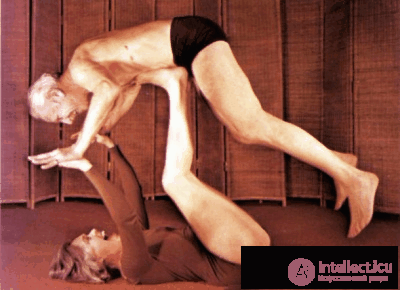
Лоуэн полагал, что главной причиной психосоматических расстройств, неврозов и депрессии является подавление чувств, которое сопровождается хроническими мышечными напряжениями, блокирующими свободное течение энергии в организме человека и приводящее к изменению функционирования личности. Ученый утверждал, что игнорирование и непонимание человеком собственных чувств, приводит к заболеваниям и что ощущения, которые испытывает человек от собственного тела, служат ключом к пониманию своего эмоционального состояния. Через раскрепощение тела человек обретает свободу от мышечного напряжения. При этом восстанавливается свободная циркуляция жизненной энергии, что приводит к глубинным личностным изменениям.
Any neurosis is a distortion or violation of a person’s relationship with reality. The only authentic reality for each person is his own body. It can be assumed that in order to bring a person out of the state of neurosis, one must first of all return his consciousness to the state of oneness with the body.
Therefore, therapeutic work with patients Lowen began with close attention to their physical appearance: what is the posture, posture, facial expressions, patient gestures? How does he breathe? Is his belly relaxed or tense? What is the condition of its muscle mass? What movements can he perform and which ones are difficult for him? And most of the work that was to be done was to relieve chronic tension from the muscles with the help of a carefully developed system of exercises.
Основываясь на психических и физических проявлениях характера человека, Александр Лоуэн выделил пять типов характеров: «шизоидный», «оральный», «психопатический», «мазохистический» и «ригидный».
Помимо этого в биоэнергетической терапии введен ряд понятий, к числу которых относятся «энергия», «мышечная броня» и «заземление», что является принципиальным вкладом Лоуэна в развитие теорий Райха.
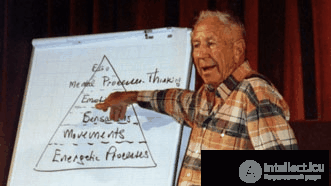
Биоэнергетический анализ обеспечивает снятие мышечных напряжений с помощью различных физических упражнений и определенных поз, направленных на разблокирование напряженных зон.
Психологическая работа в биоэнергетике использует прикосновение и давление на напряженные мышцы на фоне глубокого дыхания в специальных позициях, способствуя тем самым расширению осознавания тела и помогая психофизической интеграции организма.
В ходе терапевтической сессии пациенты не только рассказывали о болезненных отношениях с близкими, но дышали, гнулись, приседали и колотили кушетку. Терапевт мог попросить пациента занять определенную позу, громко кричать и размахивать руками. Всё это делалось для того, чтобы чтобы снизить мышечное напряжение и расслабить мускульную броню и позволить биоэнергии течь свободно, как это было когда-то в раннем детстве.
Важным элементом биоэнергетической терапии является обучение пациента тому, как стать “заземленным” и слиться с природой.
Заземление – это не только способность человека твердо стоять на ногах. Заземление означает энергетический контакт с почвой, ощущение опоры, которая обеспечивает хорошую устойчивость и возможность двигаться. Характер заземления отражает внутреннее чувство безопасности человека. Если человек хорошо заземлён, он чувствует себя комфортно и уверен, что имеет твердую почву под ногами. Проблема недостатка чувства безопасности неразрешима до тех, пока человек не осознает свое недостаточное заземление. Александр Лоуэн утверждал: «Чем лучше человек ощущает свой контакт с почвой (реальность), чем прочнее он держится за нее, тем большую нагрузку этот человек может выдержать и с тем более сильными чувствами он способен совладать».
Чтобы почувствовать, как действует биоэнергетика, можно выполнить следующее упражнение.
В процессе его выполнения постарайтесь не переусердствовать. Если почувствовали усталость, – немедленно остановитесь. Целью упражнения является получение удовольствия после упражнений, именно в этом заключается один из главных принципов биоэнергетики.
Встаньте прямо, стопы поставьте параллельно на расстоянии около 50 см.
Наклонитесь вперед и достаньте кончиками пальцев обеих рук до пола, сгибая колени настолько, насколько это необходимо. Основной вес тела должен приходиться на подушечки стоп, а не на ладони или пятки.
Touching the floor with your fingers, gradually straighten your knees, but do not block them; Stay in this position for 20-30 breaths. If you cannot fully straighten your knees, do not try to achieve it right away. Try to breathe deeply and freely. Perhaps at some point you will feel your legs begin to tremble. This means that excitation waves begin to pass through them. If the tremor does not occur, then the legs are too tight. In this case, you can try to provoke a shake, gradually bending and straightening the legs. These movements should be minimal, their goal - the relaxation of the knee joints.
Упражнение должно выполняться не менее 25 дыхательных циклов или пока не возникнет дрожание в ногах. Вернувшись в позицию стоя, сохраните колени слегка согнутыми, стопы параллельными, а центр тяжести смещенным вперед.
Ваши ноги могут все еще дрожать, что будет свидетельством их жизненности. Чувствуете ли вы сейчас свои ноги лучше? Чувствуете ли вы себя более расслабленным? Если в этой позиции ноги не вибрируют, можно продолжить упражнение до 60 дыхательных циклов и повторять их несколько раз в день…
Bioenergy is aimed at restoring the so-called "primary essence" of a person through the achievement of freedom of expression and the mobilization of the energy potential of the body. It combines work with the body and the “mind”, helping people in solving their emotional problems and realizing the potential for receiving pleasure and joy of life.
According to Lowen, people who suffer from neurosis, most of their energy is spent on maintaining the work of psychological defense mechanisms that protect against the influence of both real internal sensations and external influences, and imaginary fears, with the help of muscular tension. If the corresponding tense muscles are relaxed, the very feeling of fear and its cause become accessible to consciousness.
In the process, Alexander Lowen uses tight poses. They are designed to energize chronically stressed parts of the body, which, ultimately, leads to their relaxation. The tension in the constantly clamped parts of the body increases until it becomes so large that the person is forced to relax his protective shell. The shivering that often accompanies these postures is an indicator of the energization of the muscles compressed by the protective armor.
Often, bioenergy work concentrates on the legs and pelvis in order to establish a better, more rooted connection with the earth. Lowen writes: “We begin with our legs and feet, because they are the foundation and support of the ego-structure. They have another function. Through legs and feet, we maintain contact with the only unchanging reality in our lives, with the earth or the soil. ”
Man’s manifestation of negative feelings, such as anger, fear, sadness, hatred, almost always precedes the expression of positive emotions. According to supporters of bioenergy, negative feelings hide a deep need for positive feelings and pleasure.
Lowen believed that bioenergy runs between two poles, one of which is located in the upper part of the body, and the other at the bottom. The upper body is mainly responsible for the absorption of energy - either in the form of food and oxygen, or in the form of impressions. Excess energy is discharged through movements or through the genitals in the lower body. In a healthy person, these two basic processes - charging (above) and discharging (below) - are in balance.
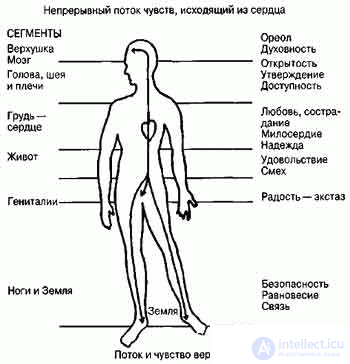
Most people, Lowen believed, are in a state of cleavage, which in the body is expressed by tension in the diaphragm and the absence of abdominal breathing. The energy flows in the body are literally divided by this voltage into two parts. The mind of such a person is at war with feelings, desires - with prohibitions. Neurosis and fear in this situation are inevitable.
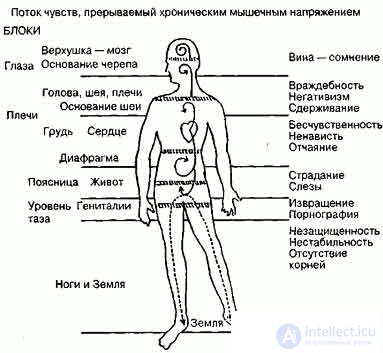
In modern humans, the lower parts of the body usually become energetically undercharged. A person lives only the upper body - the mind and analysis, while his consciousness is divorced from the roots (unconscious). He can not get the necessary discharge (including sexual discharge), does not feel the connection with reality. He "soars in the clouds", being unable to descend to the earth until the illusion itself, for which he clung, collapses. But even after that, he is not kept on the ground, but is looking for the next illusion. And only if a person feels his stomach and legs, is it possible to avoid splitting between the conscious and the unconscious, between the ego and the body, spirituality and sexuality, between his self and the rest of the world.
Transfer of feelings in the abdomen and legs Lowen calls grounding. A grounded person is “firmly on his feet” - he feels the firm support of the earth and the courage to stand on it or move along it at its own discretion. Lowen's grounding, like everything else, is not just a psychological metaphor, but part of his bioenergy concept. It is similar to the grounding of electricity: as when grounding electricity, an excessive charge is released, and in man, grounding serves to exit the body excitation.
The upper half of the body also often has its own specific areas of tension that impede natural deep breathing. Tight, tense chest reduces sensations in this part of the body, especially those associated with the heart. When the heart is encased in a rigid chest, love cannot be free, it is squeezed and limited. Muscle spasms in the shoulder girdle that interfere with natural hand movements or gait, affect the breathing of a person. They do not allow him to fully exhale, which would cause sensations in the pelvic region. These spasms suspend a person as if on a coat hanger, not allowing him to fully reach the expiratory phase of the respiratory cycle.
The tension ring around the base of the skull affects the mobility of the jaw, keeping it either in the retracted or in the extended position. The retracted jaw indicates obstacles in self-assertion, the protruding jaw is a symbol of hardness and disobedience. Since the tension of the jaw includes the tension of the internal muscles at the base of the skull, this ring of tension blocks the flow of feelings from the body to the head.
There are other areas of chronic muscle tension that disrupt the respiratory waves and block the free flow of energy in the body. For example, spasms of the long muscles of the back and legs create a general body stiffness that prevents the flow from passing.
To solve these problems, Alexander Lowen developed a whole system of postures and exercises, many of which eventually migrated to other areas of body-oriented therapy. Among them, the “Arch of Lowen” is particularly famous - a static posture, outwardly quite simple, but it is impossible to perform it if there are chronically tense muscles in the human body. The main techniques of bioenergy are various manipulations with muscular fascia, breathing exercises, techniques of emotional emancipation, tense postures (“Lowen’s arch”, “pelvic arch”), active motor exercises, verbal ways of releasing emotions, various options for physical contact between members of the therapeutic group, etc.
Only if there are no muscular blocks in the body that impede the free flow of energy, does the person feel like a unity and is in harmony with himself. His feelings do not argue with the mind, his sexuality does not interfere with spirituality. His actions are spontaneous, free, and his behavior is as flexible as his body.
By freeing his body, a person becomes free from muscular tension, which leads to the restoration of the free circulation of vital energy and leads to deep personal changes. A healthy person is able to consciously control the expression of his feelings, and is able to turn off self-control, surrendering to spontaneity. He has access equally to unpleasant feelings (despair, fear, pain, anger), and to enjoy sexual experiences, to the feeling of joy and love.
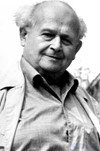
Moshe Feldenkrais postulates that people act in accordance with their I-way, directing every action and due to three factors:
a) biological constitution
b) education in a specific social environment,
c) self-education, an independent element of social development.
Since the inheritance of physical signs does not depend on us, and education in society is imposed, self-education is the only thing that is in our own hands. These three forces form an I-image or individuality (personality). They are also the main determinants of the success or failure of an individual in society and interpersonal relationships. An individual forms a social mask that he wears throughout his life to demonstrate success or failure. Identification with a social mask can lead to a loss of communication with one’s own physical and, organic impulses (needs) and sense of satisfaction. The organic life of the individual and the satisfaction of internal organic motives are in conflict with the external social and financial existence of the mask. From the point of view of Feldenkrais, this is the equivalent of emotional distress. The essence of the Feldenkrais system is to form the best bodily habits, to restore the natural grace and freedom of movement, to affirm the image of the Self, to expand self-awareness and develop human abilities. Feldenkrais argues that the deformed patterns of muscle movements become stagnant, become habits that act outside of consciousness. Exercises are used to reduce excess stress with simple actions, such as standing, and to release the muscles in order to use them for their intended purpose. To facilitate the realization of muscular effort and smooth movements, the patient’s attention is focused on finding a better position, corresponding to his innate physical structure.
Method F. Matthias Alexander
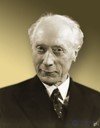
Emphasis on the study of habitual postures and posture, as well as the possibility of their improvement.
Austrian actor Frederick Matias Alexander, after a number of years of professional activity, lost his voice, which was a real life tragedy for him. For nine years he devoted thorough self-observation in front of a three-leaved mirror. Watching his speech actions, Alexander drew attention to the habit of throwing back his head, sucking in air and actually compressing the vocal cords, and tried to get rid of the wrong movements and replace them with more suitable ones. As a result, he created a method of teaching integrated movements, based on balancing the head and spine; He began teaching others his method and, thanks to his perseverance, was able to return to the stage.
Alexander's method is aimed at the use of the usual body postures and their improvement. Alexander believed that the cause of free and natural movements, no matter what we do, is the greatest possible stretching of the spine. This does not mean a forced stretching of the spine, it means natural stretching upwards. The lessons of the technique of Alexander suggest a gradual subtle guidance in mastering the more efficient and satisfactory use of the body. As a rule, therapy begins with a slight pressure on the head, while the muscles of the back of the neck lengthen. The patient makes the head a slight upward movement, as if the head is lifted, and thus a new relationship between the weight of the head and muscle tone is created. "Then the light manipulations continue in movement, in a sitting position, when standing up. As a result, a sensory experience of" kinesthetic ease "occurs, in which a person suddenly feels weightless and relaxed. In addition to exercises of this type, the Alexander method also includes the correction of psychological attitudes and the elimination of unwanted physical habits. enu particularly popular artists, dancers and m. n. It also effectively used to treat certain chronic diseases and injuries.
Ida Rolf Therapy (Rolfing)
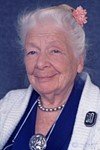
The method of structural integration, called rolfing named after its founder Ida Rolf. This method pays great attention to physical contact.
Ida Rolf defended her doctoral thesis in biochemistry and physiology in 1920 and worked for 12 years as an assistant in the biochemical laboratory at the Rockefeller Institute. For over forty years she has dedicated herself to improving the system of structural integration and training this system.
The Rolf method is based on the idea that a well-functioning body with minimal energy expenditure remains straight and vertical, despite the influence of the force of aggression. Under the influence of stress, this situation is distorted, and the strongest changes occur in the fasciae and connective sheaths covering the muscles. The goal of structural integration is to bring the body to better muscular balance, closer to the optimal posture, in which a straight line can be drawn through the ear, shoulder, femur and ankle. The therapy consists of a deep massage with the help of fingers and elbows. This massage can be very strong and painful. The greater the muscle tension, the greater the pain and the more necessary exercise. The procedure of roofing includes 10 basic exercises, during which the body is massaged in a certain sequence.
Working on certain parts of the body often releases old memories and contributes to deep emotional discharges. At the same time, the purpose of rolling is predominantly physical integration, the psychological aspects of the process do not become the subject of special attention. At the same time, many of those who combined rolfing with one or another form of psychotherapy noted that rolfing helps to release psychological blocks, promoting progress in other areas.
System "Sensual Consciousness"
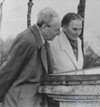 The system in Europe was developed by Elsa Gindler and Heinrich Jacob, in the USA - their students Charlotte Selver and Charles Brooks. Sensual consciousness is the process of knowing that returning in contact with our bodies and feelings, with the abilities we had as children, but we lost as we mature. Parents respond to children from the position of their own preferences, instead of figuring out how to contribute to the real development of the child. Children are taught what things are and which actions are “good” for them, how long they need to sleep and what they should eat, instead of letting them judge them by their own experience. A “good” child learns to come when his mother calls, to interrupt his natural rhythm, to shorten his stay in the air for the convenience of parents and teachers. After such numerous disorders, the sense of rhythm intrinsic to the child is confused, as well as the inner sense of the value of one’s own experience.
The system in Europe was developed by Elsa Gindler and Heinrich Jacob, in the USA - their students Charlotte Selver and Charles Brooks. Sensual consciousness is the process of knowing that returning in contact with our bodies and feelings, with the abilities we had as children, but we lost as we mature. Parents respond to children from the position of their own preferences, instead of figuring out how to contribute to the real development of the child. Children are taught what things are and which actions are “good” for them, how long they need to sleep and what they should eat, instead of letting them judge them by their own experience. A “good” child learns to come when his mother calls, to interrupt his natural rhythm, to shorten his stay in the air for the convenience of parents and teachers. After such numerous disorders, the sense of rhythm intrinsic to the child is confused, as well as the inner sense of the value of one’s own experience.
Another problem of children's experience is making efforts. How many parents who want their child to sit up, get up, go, speak as early as possible! They do not want to wait for the natural process of deploying abilities. Children are taught that it is not enough to let things happen on their own; they are taught to "try."
The work of sensory consciousness focuses on direct perception, the ability to distinguish one's own feelings and feelings from socially grafted images that so often distort experience.
This requires the development of a sense of inner peace and peace based on "non-doing."
Many exercises in the system of sensory awareness are based on fundamental positions - lying, sitting, standing, walking. These exercises, according to the authors of the methodology, provide a natural opportunity to open our attitude to the environment, to develop a conscious awareness of what we are doing. Most exercises have a meditative orientation. Selver and Brooks point out that with the gradual development of inner peace, unnecessary stresses and unnecessary activities decrease, susceptibility to internal and external processes increases; there are other changes in the whole person.
BioEnergoSystem Therapy (BEST-massage)

BEST - Biological energy in the treatment system is a complex system of influence by various methods on the structure of the human body, which is based on the principle of the functional unity of the human body and psyche. The work of a healer according to this method is systemic (two-way). On the one hand, by eliminating the pathological process in the body, the healer directly affects the patient's physical body, its energy, on the other hand, it works on a mental level . This allows us to consistently use the techniques and methods of physical, bioenergetic and psychological effects to achieve a more rapid and complete healing effect.
The method is based on contact elimination of disorders caused by the peculiarities of body memory (cellular memory). Very often, seemingly insignificant events take place that radically change our whole life (which, often, we do not even suspect). Over time, you can forget about them, but our body remembers and “embeds” us in events that we deliberately do not want, we try to avoid - but they repeat. We consider them fatal for ourselves or for our loved ones - and this is the very body-soul connection, imperceptibly established, growing, gaining strength, and often subordinating us to ourselves.
During the procedure, you will be in a special state of consciousness when there is an opportunity to see, bodily feel, relive and rethink whole periods of life. In this state, the body acquiring unity with the psyche helps us to realize the very CHOICE - and an indicator of this will be the removal of physical or mental illness.
Also, besides the foregoing:
BEST - reduces psycho-emotional tension, relieves depression, improves mood.
BEST - activates the body's defenses, improves the functioning of the organs of the cardiovascular system, the musculoskeletal system.
BEST - normalizes the endocrine and hormonal system.
БЭСТ — решает многолетние психо-сексуальные проблемы: такие как аноргазмия, болезненные менструации, нарушения менструального цикла и др.
Метод основан Евгением Иосифовичем Зуевым – Творчески освоив достижения восточной и западной медицины , на которые опирается современная практика целительства, а также различные массажные техники он создал свой метод, получивший признание среди коллег-целителей и (уникальный случай) "официальной" медицины. в России он зарегистрирован как "СПОСОБ КОРРЕКЦИИ ПСИХО-СОМАТИЧЕСКИХ НАРУШЕНИЙ" (получен патент).
Comments
To leave a comment
The basics of psychotherapy
Terms: The basics of psychotherapy